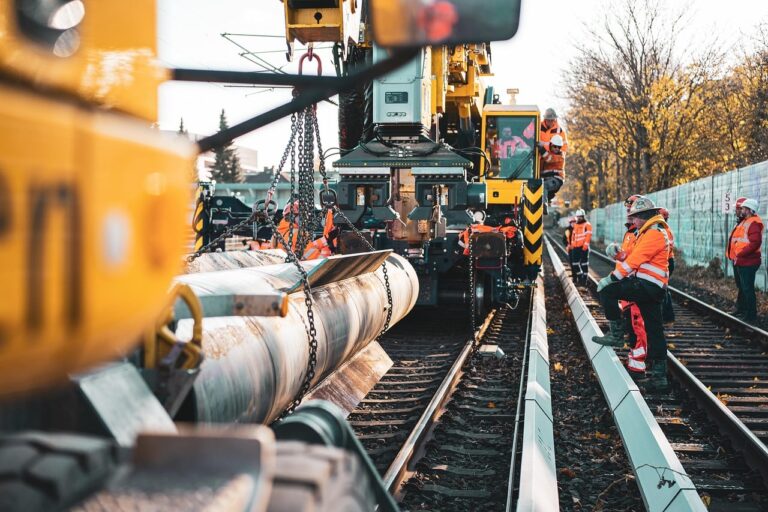Industrial noise reduction strategies
6 effective ways to control industrial noise Industrial noise pollution is a major concern in industrial settings. It poses a nuisance and potential health hazards, both to workers and nearby residents. Fortunately, there are effective measures that can mitigate its impact. This comprehensive guide will discuss how industrial noise can be reduced and controlled, as…
6 effective ways to control industrial noise
Industrial noise pollution is a major concern in industrial settings. It poses a nuisance and potential health hazards, both to workers and nearby residents. Fortunately, there are effective measures that can mitigate its impact.
This comprehensive guide will discuss how industrial noise can be reduced and controlled, as well as the potential consequences if noise starts to impact the community.
Understanding industrial noise
The first step in implementing effective noise reduction strategies is to understand the sources and implications of industrial noise. Machinery such as compressors, generators, fans, and manufacturing equipment are the primary culprits. This noise, measured in decibels (dB), can cause hearing loss and lead to stress, fatigue, and decreased productivity among workers.
The legal limit for industrial noise emissions in Australia is governed by state and territory regulations, with variations between jurisdictions.
Compliance with these regulations is enforced through monitoring and enforcement measures to mitigate the impact of industrial noise on the surrounding environment and communities while safeguarding people’s health and wellbeing.
The impact of industrial noise on communities
When industrial noise begins to encroach upon residential or commercial areas, it can profoundly affect the quality of life of nearby residents. Excessive noise can disrupt sleep patterns, impair concentration, and even lead to heightened levels of stress and anxiety. What’s more, prolonged exposure to high levels of industrial noise has been linked to a range of health issues, including hypertension, cardiovascular disease, and cognitive impairment.
In addition to these negative health impacts, industrial noise pollution can decrease property values and deter potential investors or businesses from establishing themselves in affected areas.
So, what can be done to reduce industrial noise?
Effective industrial noise reduction strategies
1) Installing sound barriers and enclosures
Erecting sound barriers around noisy equipment or enclosing them within soundproof structures can significantly diminish noise propagation. These barriers can be constructed using specialised acoustic panels designed to absorb sound waves.
2) Using noise-reducing equipment
Investing in quieter machinery and equipment is an effective long-term noise reduction strategy. Manufacturers offer a range of noise-reducing technologies, such as mufflers for exhaust systems and acoustic enclosures tailored to specific industrial applications.
3) Performing regular inspections and lubrication
Regularly inspecting and lubricating moving parts can prevent equipment from generating excessive noise due to friction or wear. Proper maintenance extends the machinery’s lifespan and keeps noise levels in check.
4) Tightening loose components
Loose bolts, belts, or fasteners can amplify noise by causing rattling or vibrations. Tightening these components as part of preventive maintenance can help minimise noise emissions.
5) Replacing worn parts
Over time, components such as bearings, gears, and belts may wear out, increasing noise levels. Promptly replacing worn parts reduces noise and prevents further damage to machinery.
6) Implementing administrative controls
Scheduling noisy operations during off-peak hours or implementing zoning regulations to separate industrial areas from residential or commercial zones can minimise the impact of noise on surrounding communities. Providing industrial noise exposure training and personal protective equipment usage can mitigate health risks.
The consequences of non-compliance to noise regulations
In Australia, industrial facilities that exceed the legal noise limits may face several consequences as dictated by state and territory regulations. Regulatory authorities such as the Environmental Protection Authority (EPA) may issue warnings or notices to the facility, mandating immediate action to mitigate the excessive noise emissions. Failure to comply with these directives can result in the imposition of fines or penalties, which may escalate to repeat offences or prolonged non-compliance. The specific fines and penalties vary across jurisdictions, but are all designed to incentivise adherence to noise regulations.
Additionally, regulatory agencies may require the facility to implement noise mitigation measures, such as installing sound barriers or upgrading equipment to reduce noise levels. Persistent non-compliance can lead to more severe consequences, including legal action and court proceedings. In extreme cases, the facility’s operating licences may even be revoked.
Get expert advice on industrial noise reduction
It is vital for industrial facilities to take proactive steps to reduce and control industrial noise to protect their workers, nearby residents, and the environment. By implementing effective noise reduction strategies and adhering to regulatory requirements, industrial facilities can continue to operate safely and sustainably.
For engineered solutions to industrial noise, contact Flexshield 1300 799 969.
Related Stories
-

Flexshield’s big month in industrial noise control – on the road from QLD to WA!
Taking action for hearing health and sustainable water management It’s been a busy month for the Flexshield team, and we’ve covered vast distances from Queensland to New South Wales, Victoria, and Western Australia. It’s been… -

The science behind tailored industrial noise control solutions for your project
7 key considerations for addressing noise pollution for your project When you’re managing noise on a job site, it’s important to understand the science behind industrial noise control and how to apply it effectively. Whether… -

World Hearing Day 2025: protecting workers’ hearing with Flexshield
Why prioritising hearing protection is essential for your workforce Each year on March 3rd, the World Health Organisation (WHO) marks World Hearing Day, raising awareness about hearing loss and promoting actions to protect auditory health….